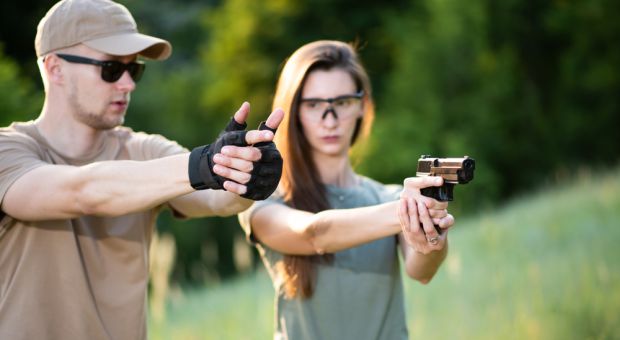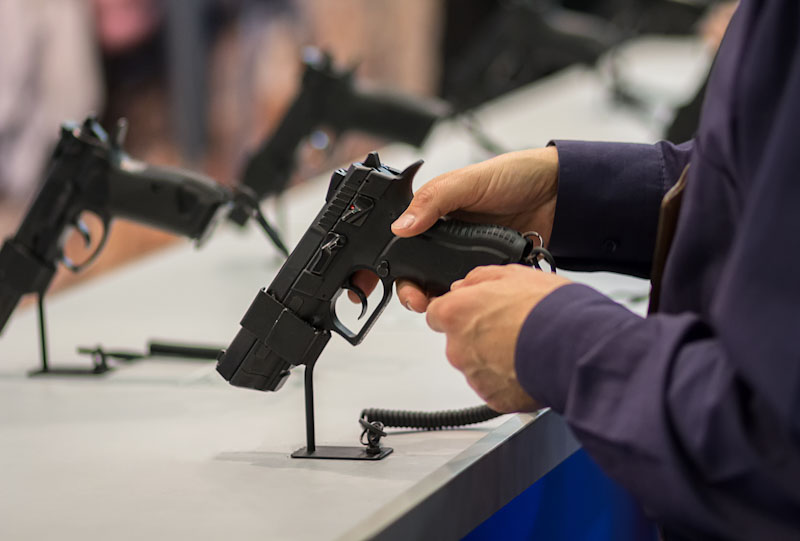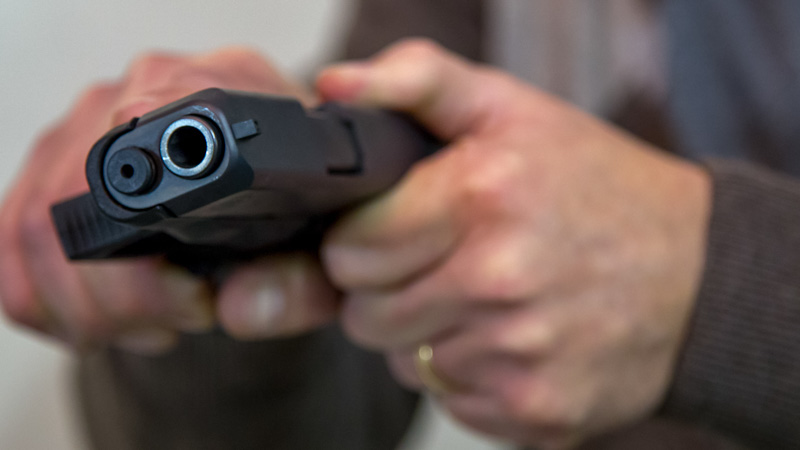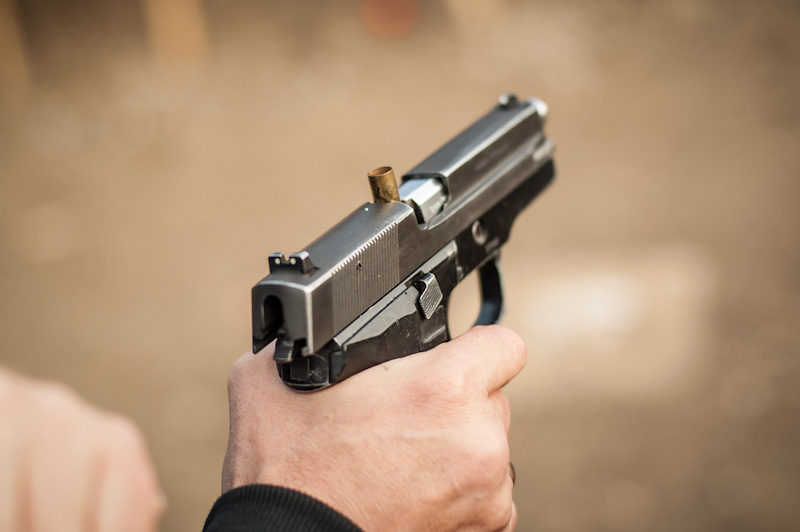Firearm safety regulations and practice recommendations are designed to avoid any accidental discharge or consequences of any firearm malfunctions.
The purpose of this is to reduce the risks of unintentional injury, property damage, or death. In total, there are 47,000 deaths worldwide in 2013 due to improper storage, possession, and handling of firearms.
As hunting season approaches swiftly, it is always the perfect time to refresh your fundamentals. If you are training your little one with shooting, then this is more vital. Every hunter – beginner or professional should always be reminded of firearm safety rules. One important safety rule is the safe storage of your firearms. It’s your full-time responsibility to always make sure that no one can access your gun for unauthorized use.
But there are more important things than that! Here are the 4 Absolutely Essential Firearm Safety Rules to keep you and your hunting partners safe. Remember, these are rules and regulations to follow, and not mere recommendations.
1. Keep the Muzzle Pointed in a Safe Direction (Usually Downwards or Upwards)
This rule is the most basic one. If a firearm is in your hands, its muzzle should never be pointed at something you do not intend to shoot. Instead, it should always be pointed in a safe direction – usually downwards or upwards to avoid firearm accidents.
A safe direction is a direction where you cannot basically hit anyone – taking into account the possible ricochets and bullet penetration through the ceilings and walls. Further, it is a general rule that you don’t point your gun at anything you don’t intend to shoot specifically other hunters.
This rule also applies when you are loading or unloading your guns. No injury can happen so long as your firearm is pointed in a safe direction. Make this rule a habit for you to be aware where the muzzle of your gun is pointing. Be sure also that you are in safe control of the direction by which the muzzle is pointing even if you stumble and fall. As a gun owner, it is your responsibility and you are only the one who can control it.
2. Be Aware of Your Target and What Is Beyond It
Once you release a shot, you can never call it back. Meaning, once you have shot your fire, you cannot anymore control what it will strike or where it will go. This leaves us with the most important rule when shooting: always be aware of the target you are going to shoot and what goes beyond it. Make sure that the bullet will not hit anything or anyone beyond your intended target.
To make you understand better, a 22 short bullet can travel for over one and one-fourth (1 & ¼) miles. A .270 ammunition can travel as far as 3 ¼ miles. On the other hand, a 30-06 high-velocity cartridge can travel for more than 3 miles. A shotgun pellet can travel for up to 500 yards, while a shotgun slug can cover over half a mile. This means that your bullet can travel this far once it misses your intended target or in case it ricochets in another direction.
Also, remember that your target will not completely stop the bullet. If it pass-through, the bullet may gain enough energy to travel beyond the target, so be absolutely sure that there is nothing beyond your target, even other animals.
3. Keep Your Fingers Away From the Trigger Until You Are Ready to Shoot.
Being a responsible gun owner can be inculcated with how you handle your gun. This means that you need not to touch the trigger on a firearm until you are ready to shoot. Any mechanical device may slip or fail anytime. Hence, you have to keep the safety on until you’re ready to fire. Only then you can put your fingers on the trigger.
4. Firearms Should Be Unloaded When Not in Use
Your firearm should only be loaded when you’re on the target range or shooting area. But when not in use and as soon as you’re finished, your firearms should be unloaded. A loaded gun has also no place in a car. You should immediately unload your gun when you have finished shooting, and before you bring it into your car.
Never push or pull a loaded firearm toward another person. Never ever assume that gun is unloaded — always check for yourself. This is a mark of a responsible gun owner. Further, your firearms should also be in a safe place or vault separated from each other. Every gun owner should be responsible enough to keep the firearms away from children and unauthorized adults.
Other Essential Rules You Need to Know
Always Wear Protective Gears When Shooting
Before going in the field, all shooters shall wear protective gears like shooting glasses and hearing protectors. Exposure to loud noises while shooting can damage hearing. At the same time, vision protection is essential to protect the eyes from fragments, twigs, clay chips, and falling shots. Not only it is important during shooting but also for cleaning and disassembling your gun to prevent the possibility of spring parts and other agents to contact the eyes.
Most of the rules of firearm safety are intended for others around you, but this specific rule is for your protection alone. Furthermore, having adequate gears for ears and eyes protection will make your shooting easier and improve your enjoyment of the sports.
Use Correct Ammunition
It only takes one wrong ammunition to destroy your firearm. Using improper bullets can destroy your gun and may even cause a serious injury. Hence, be absolutely certain that the ammo you’re using is compatible with the specifications of your firearm.
Ammunition that has been very wet or fully submerged in water should not be used anymore. Never spray solvents on your ammunition in lubricated firearms. Your experiences of poor ignition and performance to your firearm could also be a result of the wrong ammunition.
In this case, a responsible gun handler should never use incorrect and damaged ammunition to keep your gun well-functioning and to keep yourself safe from injury.
Be a Respectful and Responsible When Handling
More than anything else, proper respect and responsibility to your weapons and other people will help you stay safe in shooting and hunting. By instilling these values on gun handling and ownership, you can also ensure that your firearm will be as safe as possible both for yourself and everyone around you.
Refrain Gun Contact With Hazardous Materials or Chemicals
Guns in the home may also have a dangerous effect when it comes close to hazardous materials or chemicals. Some of these are ammunitions being submerged to chemical cleaning supplies, alcohol, pools and such. It is always best to keep your firearm and ammunition away from these chemicals in order to protect yourself and your family.
Practice Safe Gun Storage
Firearms must be stored in a place where it is impossible to be accessed by anyone other than the licensed user. This only means that your guns must be securely locked in its place. This is particularly essential given that more than ⅔ of firearm-related deaths involved children. This could ultimately have been prevented if only firearms were stored safe and unloaded. There are several options for gun storage. This includes gun cases, lock boxes, gun safes and vaults, or gun cabinets. All of which are available both in online shops and market stores. If you would ask, who particularly should I take my firearms away from? Here’s a few of them:
- Young child
- Teenager
- Members of the household who suffer from suicidal thoughts or depression
- Members of the household that have a history of violence
- Members of the household who suffer from drug addiction or dementia
People in these ages and conditions are more inclined to accessing a gun, whether accidentally or purposely, to hurt others or even themselves. If you have household members that fit the above criteria, this means that additional safety procedures for your firearms are needed.
Making Ammunition Inaccessible
Further, the same goes with securing your ammunition well. You have to reduce the chance of any of your household members to access it. You can also store it along with your gun – in gun cases, lock boxes, best gun safe under 500 and vaults, or gun cabinets.
Conclusion
Target shooting and hunting are definitely one of the most fun sports to practice. It is also the safest among all sports if you follow the firearm safety rules. If you want to further improve your knowledge of firearm safety, you can also enroll in shooting or hunting safety courses. This will help in stressing safety both for you and your hunting partners about handling firearms well.
At the same time, it also ensures that you and your family members will stay safe even around firearms at your home. Never be timid when it comes to gun safety. By following the 4 essential firearm safety rules and other bonuses outlined here, you can now develop safe shooting habits. Remember, firearms safety is always up to your hands.








Benjamin Moyer | March 28, 2019
|
You numbers seem to off on worldwide accidental deaths due to firearms. In the US, we typically see from ~300 to 500 accidental deaths in the US per year according to the CDC. Total deaths in the world is approximately 250,000, of which 66% is suicides and 9% is accidental. Here in the US, it’s less than 1%. Being that your readership is probably mostly US citizens, you are over exaggerating the number of accidents. I would agree that 1 life saved due to proper safety education is worth it! Good article.
Bill in Idaho | March 28, 2019
|
Thank you, Zayn, Very Much. Even when you have been shooting for 60 years (as I have) – We ALL Need to be reminded – thoroughly and often. Your article was thorough enough – it was just the right length to be both effective and informative. Very Good Work !
Zayn Karim | March 28, 2019
|
Hi Bill, Thank you for your kind words. Glad to heard that you liked it.
Rick | March 28, 2019
|
The 4th “rule” is Nonsense!
Obviously, the author does not consider the primary reason for owning a gun.
It’s not all about throwing lead at a paper target and then having a beer with your buddies
Bill in Idaho | April 1, 2019
|
Hey, Rick. I hear you – BUT, I think that Zayn was referring to when you put your firearm back on the shelf -or- in the safe – NOT back into its holster or saddle bucket. Just an observation.
john foley | April 2, 2019
|
an unloaded firearm is no good to anyone except the perp your triing to defend yourself from obviously the forth rule is useless the other 3 I agree with
Bill in Idaho | April 3, 2019
|
Hi, John. See my response just above yours. Thanks.
Qoheleth | April 10, 2019
|
There’s no such thing as an unloaded firearm. You treat EVERY weapon as if it were loaded, all the time – even if it’s not. If you’re going to take three of Jeff Cooper’s rules, you may as well get all four of them.